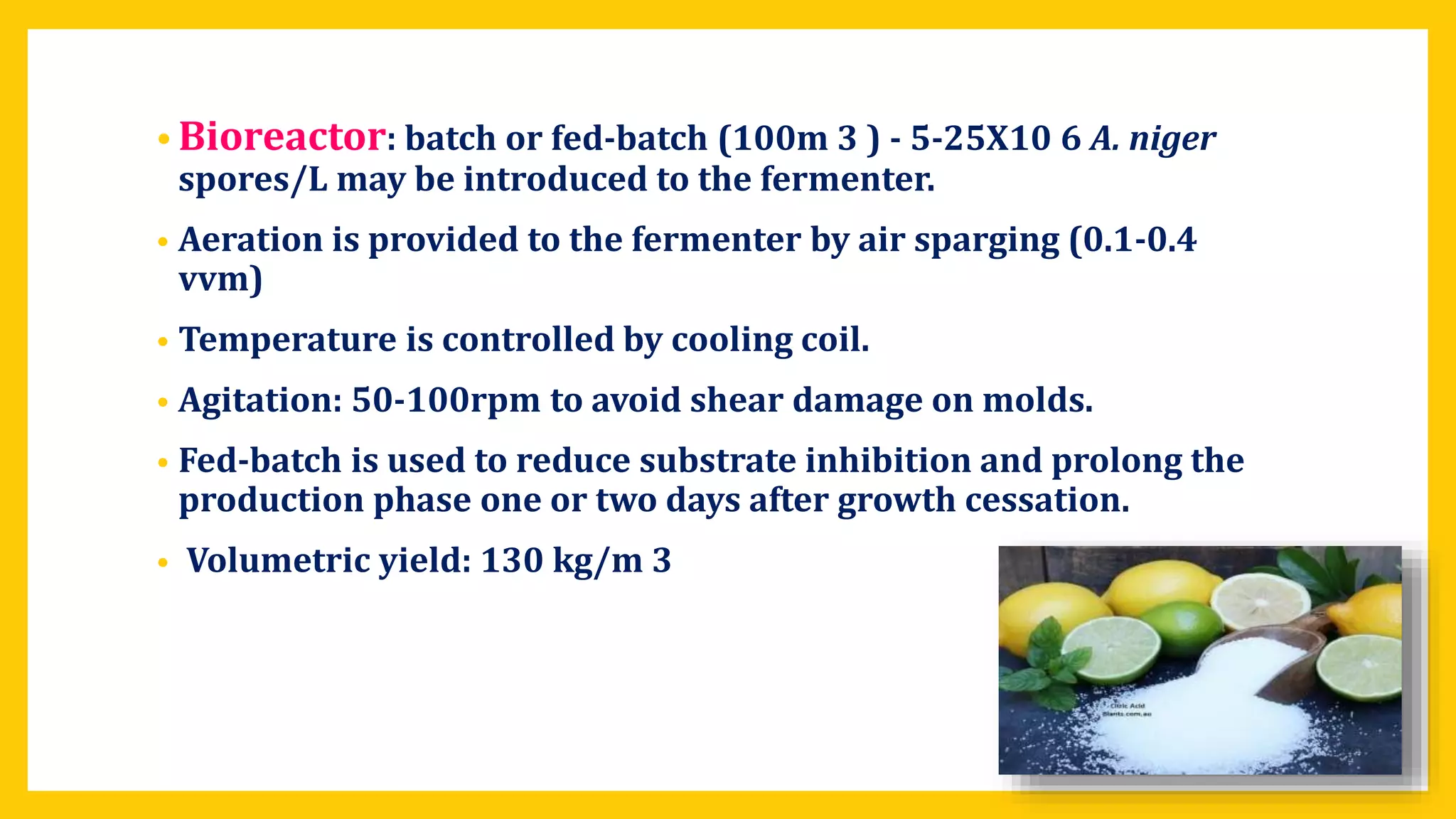Citric acid is produced industrially through fermentation using the fungus Aspergillus niger. The process involves:
1) Growing A. niger in large fermenters on a substrate like molasses under controlled conditions of pH, oxygen levels, and temperature.
2) After several days of fermentation, citric acid is recovered from the liquid through precipitation and crystallization.
3) Citric acid finds a wide variety of applications as a food additive, cleaning agent, in cosmetics and personal care products, and for industrial uses due to its acidity and ability to chelate metals. Worldwide production exceeds 1 million tons annually to meet demand.









![• Molasses substrate(15-20 % of sucrose, added nutrients) acidified with, phosphoric acid to a pH
• 6.0 - 6.5 and heated at temperature 110 ºC for 15 to 45 min.
Potassium hexacyanoferrate is added to the hot substrate, to precipitate or complex trace metals
• [Fe, Mn, Zn] and to act in excess as a metabolic inhibitor restricting growth and promoting
• acid production
• Inoculation is performed in two ways, as a suspension of conidia added to the cooled medium, or as a
• dry conidia mixed with sterile air and spread as an aerosol over the trays
• The temperature is kept constant at 30 ºC during the fermentation by means of air current
• Within 24 hours after inoculation, the germinating spores start forming a 2-3 cm cover blanket of
• mycelium floating on the surface of the substrate. As a result of the uptake of ammonium ions the pH
• of the substrate falls to 2.0
• The fully developed mycelium floats as a thick white layer on the nutrient solution. The fermentation
• process stops after 8 - 14 days.
• Recovery of mycelium to extract citric acid
SURFACE FERMENTATION PROCESS](https://image.slidesharecdn.com/citricacidproduction-230614211012-b3698284/75/citricacid-production-pdf-10-2048.jpg)








